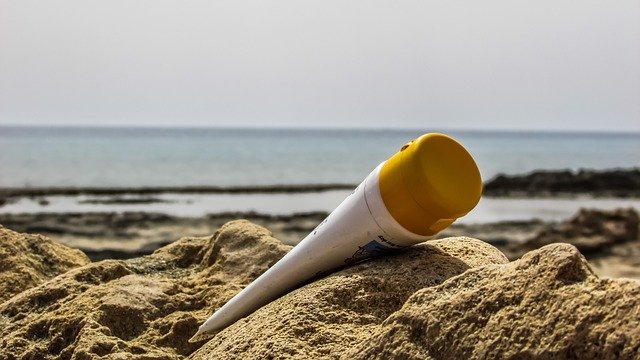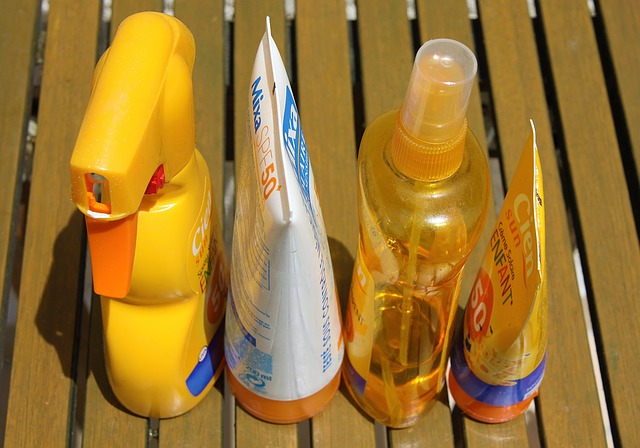Warmer weather means most of us will be spending more time outdoors, and will likely be using some sort of sun protection. But, it’s no secret how many toxic ingredients are in many of these products. In fact a controversial topic is whether the ingredients could actually be a catalyst for some skin cancers, rather then preventing them.

All of these concerns have created what I call – the great sunscreen conundrum – leaving us confused about what’s considered safe when it comes to sun protection, and even leading some to take an extreme approach of not ever letting their skin soak up beautiful rays.
Sun Paranoia and Vitamin D Deficiency
In the midst of all the talk of the importance of slathering up with sunscreen to prevent sun damage, sunburns, and decreasing the risk of skin cancer, it seems we have forgotten the sun is actually good for us.
This paranoia is contributing to a Vitamin D deficient generation. Like most things, the sun isn’t the danger, excessive exposure is. Exposure to sunlight provides all sorts of health benefits. Vitamin D is called the “sunshine vitamin” for good reason.
Just approximately 20 minutes of these golden rays will have your body manufacturing the right dose of Vitamin D3 which boosts immunity, supports bone health, improves mood, and reduces risk of cancers including skin cancer.
In addition to the benefits of Vitamin D, sunlight balances seratonin and melatonin production, two key hormones which play a huge role in better sleep. Sun rays can help lower blood pressure, fight mild depression, improve brain function, and have been shown to improve some skin conditions such as psoriasis, eczema, acne, and fungal infections.
I’m definitely not advising against applying sunscreen during long exposure to the sun, I do for sure, but catching some rays in moderation can do your body good. When choosing a sunscreen though, keep this in mind…
All Sunscreens are Definitely Not Created Equal
I will list some of the nasty chemicals to watch out for and brief descriptions of what makes them harmful. For an in depth report you can go to EWG’s website.
Oxybenzone. This is found in nearly every sunscreen in the U.S. It penetrates the skin easily, disrupts hormones, is a skin allergenic, and has been associated with endometriosis. The scary part is it has been detected in more than 96 percent of people, and found in mother’s breast milk.
Octinoxate: Disrupts hormones, and can have harmful effects on estrogen in animals that come in contact through the water.
Homosalate: Disrupts hormones and because it helps sunscreen penetrate your skin, it absorbs easily and accumulates rapidly in the body, making it hard to get rid of.
Octocrylene: Absorbs UV rays and causes free radicals that can damage cells and cause mutations. Accumulates in the body and is toxic to the environment.
Retinyl Palmitate (Vitamin A Palmitate): UV rays break down retinol compounds and produce free radicals that can damage cells, DNA, and may lead to cancer. FDA studies have shown that, when applied to skin before sun exposure, this ingredient may speed the reproduction of malignant cells, and skin tumors.
Parabens: Disrupt hormones and are skin allergens. Associated with developmental and reproductive toxicity. Note: parabens come with all sorts of prefixes (ethyl-, methyl-, butyl-, and propyl-).

Do Non-toxic Sunscreens Really Work?
Fortunately, these days options for mineral based sun care products without nasty toxic ingredients, are much more accessible. Using two main ingredients – zinc oxide and titanium dioxide – which have been proven not only to be the safest ingredients to block rays but also extremely effective, if applied correctly.
These types of sunscreen do have a slight white tint when applied, but fear not those of you who were around for the bright white zinc oxide sticks in the 80’s, you won’t be glowing in the dark! It’s usually not that bad and goes away pretty quickly when rubbed in well.
Probably the most common mistake made when applying mineral based sunscreen, so I can’t stress it enough, is not applying enough, and failing to reapply often enough, especially when spending several hours in the sun. You must reapply often for it to be effective, and definitely reapply after getting out of the water. If you plan on being in the water for hours straight natural sunscreen may not be the best option in that case.
The idea that higher SPF equals more protection might not be the case. SPF 15 blocks an estimated 93 percent of UVB rays, and SPF 30 blocks an estimated 97 percent. But at 98 percent, SPF 50 blocks a mere 1 percent more than SPF 30 and anything above a SPF 50 is too marginal to make a difference. That’s not to swerve you away from a SPF 50, just know that it’s comparable to SPF 30 blocking percentage, and may provide peace of mind more than anything.
One last thing, please be aware that just because a sunscreen is advertised as “natural” does not mean it doesn’t contain any of the toxic ingredients listed above. I have seen plenty that do. Which is why it’s important to read the ingredient list thoroughly.
The Cleanest Sunscreen is the Homemade Kind
By far the best way to insure you’re getting nothing but the best and safest ingredients in your sunscreen is to make your own. It’s actually really quick and simple, and once you purchase your first order of supplies they will yield several batches of sunscreen in the future which actually saves money in the long run. You can use the same supplies for other DIY projects like deodorant, body butter, and lip balm too! Visit my recipe here for how to make your own sunscreen.
For those who don’t have the time or desire to make it at home, here is my favorite reef safe sunscreen brand. To safe, non-toxic fun in the sun!

Thank you for your page. Very informative. I had no idea as to half the stuff that is in these sunscreens. Thank you!
My pleasure! Glad the information was helpful :)
This article was a real eye opener. I’ve got to admit that I haven’t really researched the chemicals that are used in sunscreens; I just assumed that they’re safe. I am glad that I now know what to look for. Thanks!
I’m glad you mentioned just assuming sunscreens are safe, I’m sure there are millions of people with the same thought, I mean it’s a product made to protect our skin! By all human rights we shouldn’t have to worry about the safety of it. But unfortunately we do and fortunately there’s more and more research proving toxic findings, which educates consumers so we can make better choices to use non-toxic versions. Glad I could shed some light on the topic.